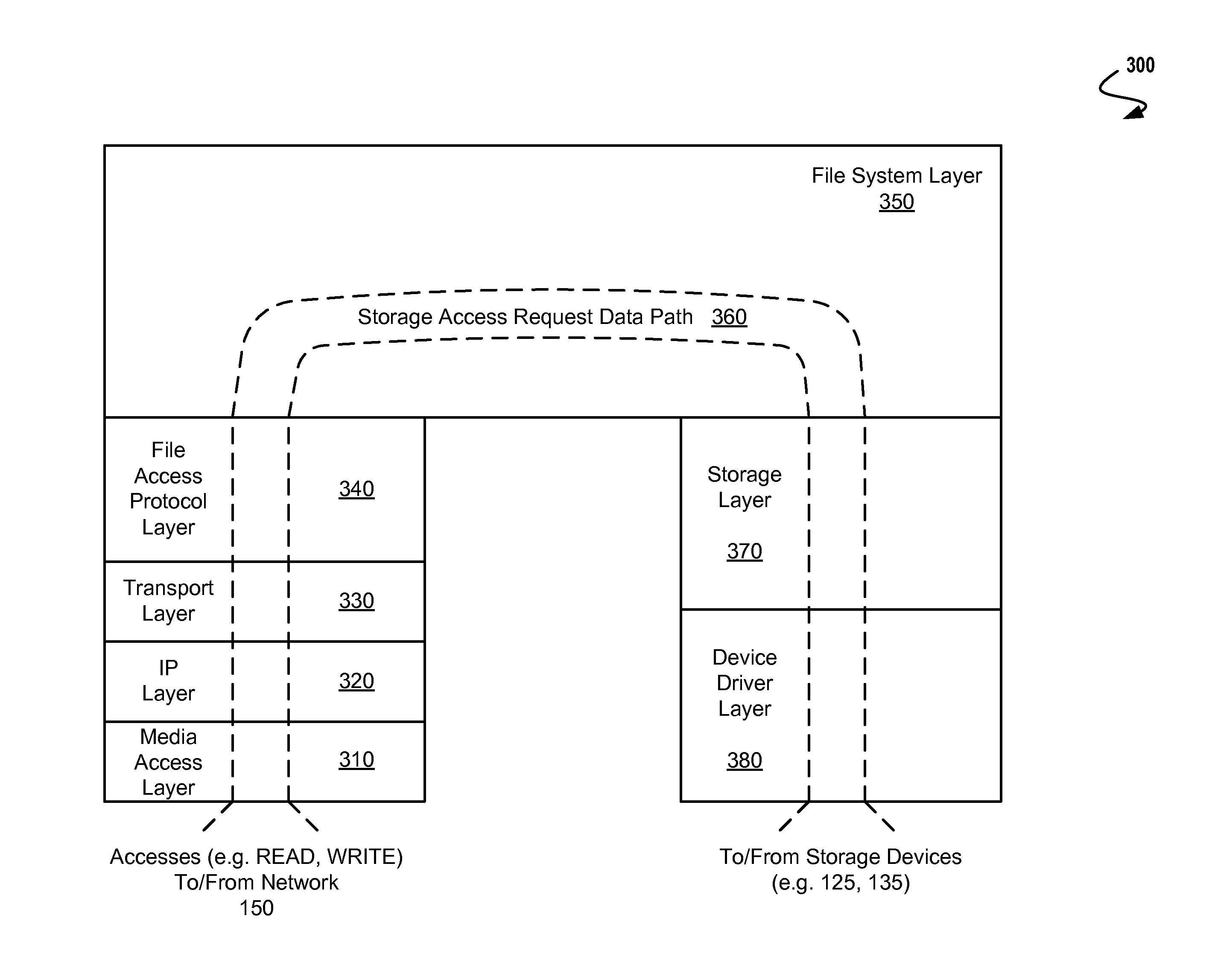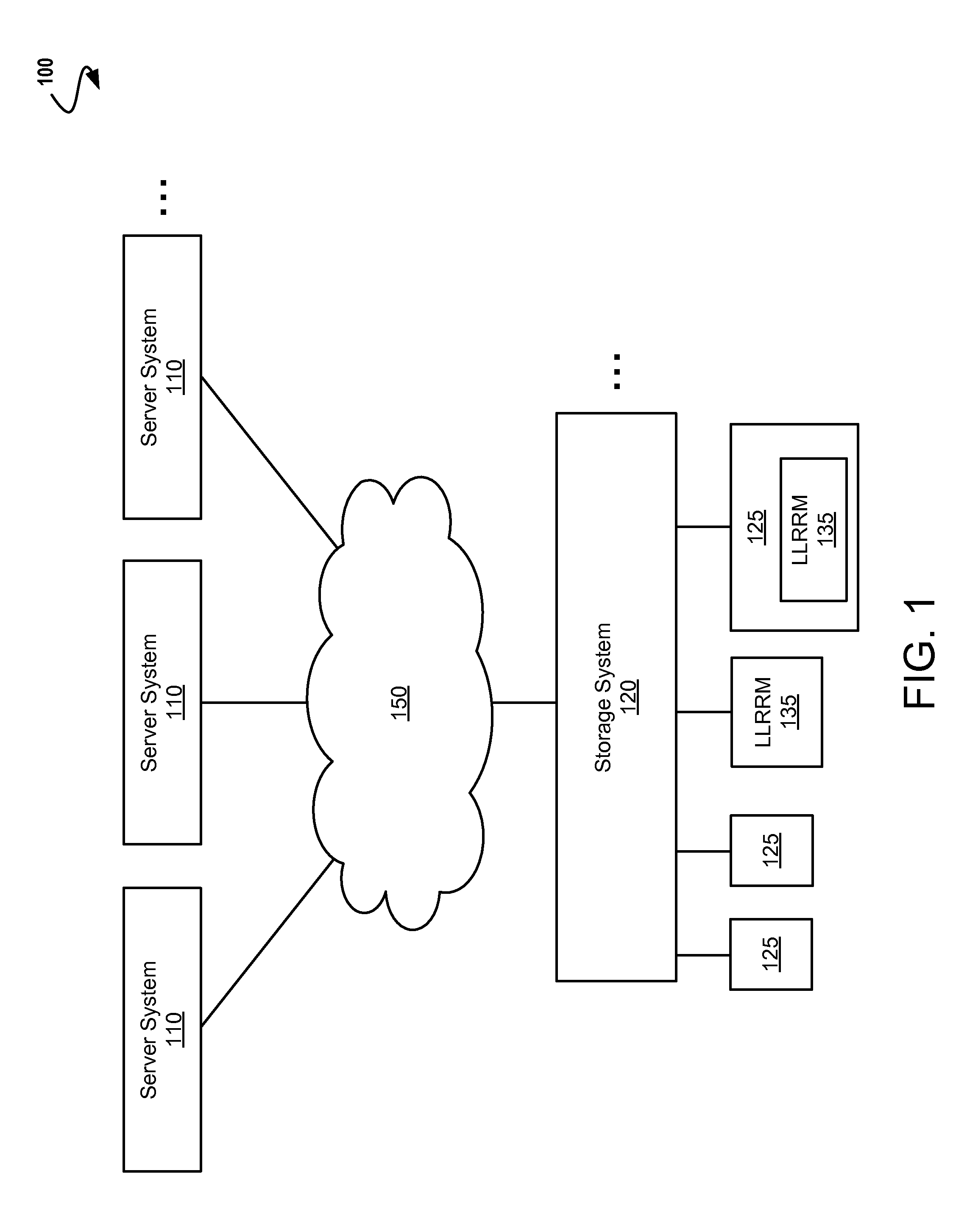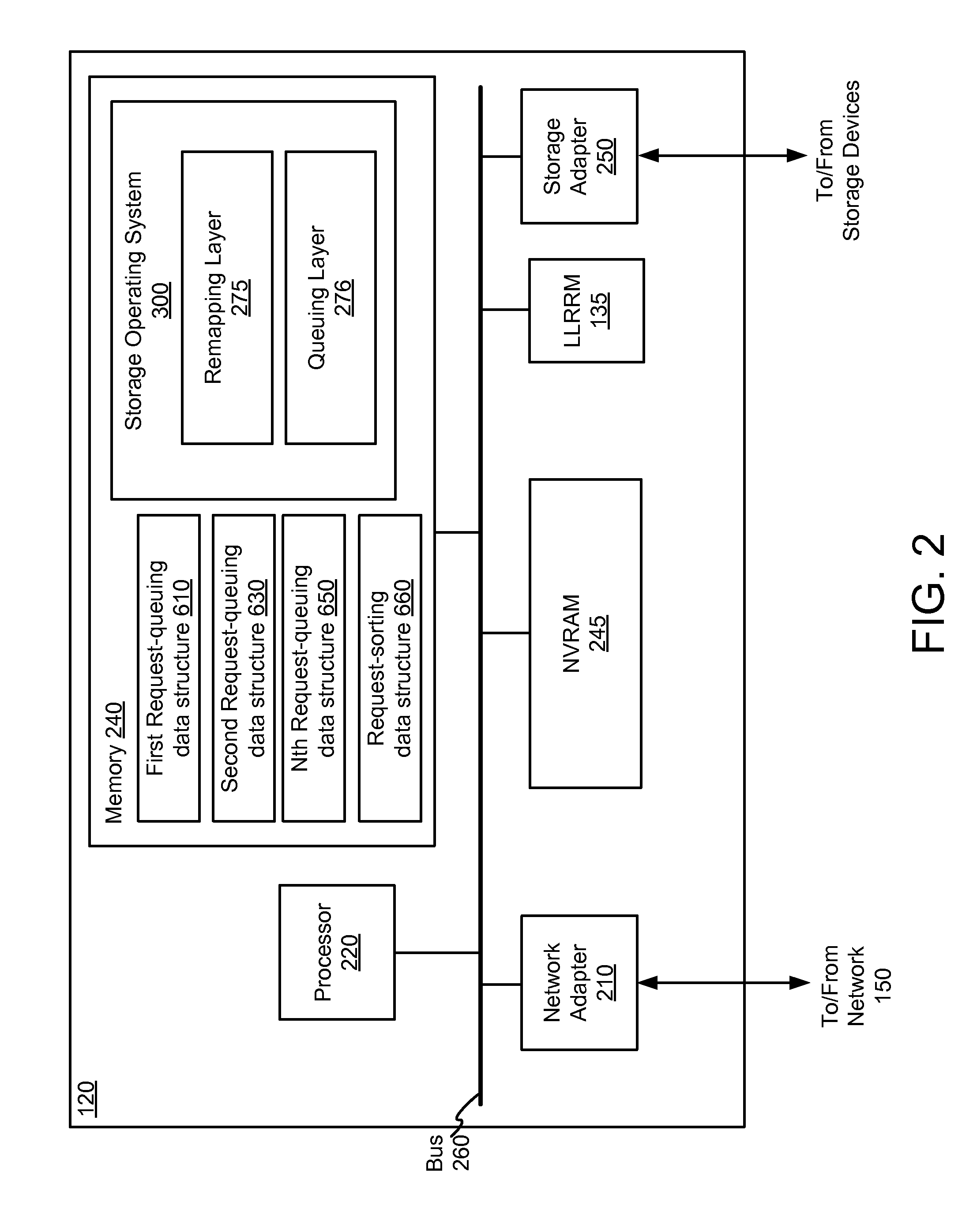Scheduling access requests for a multi-bank low-latency random read memory device
a random read and access request technology, applied in the field of storage systems, can solve the problem that conventional storage architectures may exhibit decreasing data access performan
- Summary
- Abstract
- Description
- Claims
- Application Information
AI Technical Summary
Benefits of technology
Problems solved by technology
Method used
Image
Examples
Embodiment Construction
[0029]The disclosure of United States Patent Application entitled “SCHEDULING ACCESS REQUESTS FOR A MULTI-BANK LOW-LATENCY RANDOM READ MEMORY DEVICE,” having Ser. No. 12 / 430,776, filed on Apr. 27, 2009, is expressly incorporated herein by reference.
[0030]In the following description, numerous details are set forth for purpose of explanation. However, one of ordinary skill in the art will realize that the embodiments described herein may be practiced without the use of these specific details. In other instances, well-known structures and devices are shown in block diagram form in order not to obscure the description with unnecessary detail.
[0031]The description that follows is divided into four sections: Section I describes a storage system environment in which some embodiments operate. Section II describes a storage operating system engine having a queuing layer for using a low-latency random read memory device (LLRRM) as a storage device in a storage system. Section III describes a...
PUM
 Login to View More
Login to View More Abstract
Description
Claims
Application Information
 Login to View More
Login to View More - R&D
- Intellectual Property
- Life Sciences
- Materials
- Tech Scout
- Unparalleled Data Quality
- Higher Quality Content
- 60% Fewer Hallucinations
Browse by: Latest US Patents, China's latest patents, Technical Efficacy Thesaurus, Application Domain, Technology Topic, Popular Technical Reports.
© 2025 PatSnap. All rights reserved.Legal|Privacy policy|Modern Slavery Act Transparency Statement|Sitemap|About US| Contact US: help@patsnap.com



